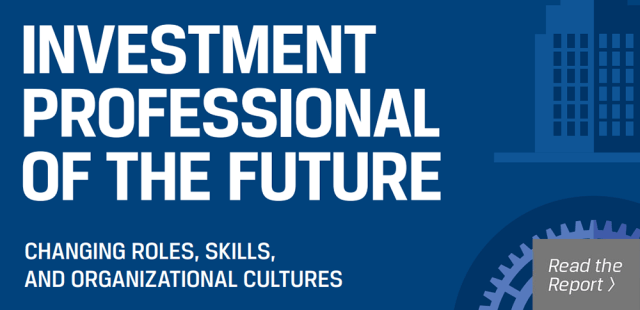[ad_1]
Panel discussions can be disappointing for both audience members and participants.
Why do we so often feel let down by what we see and hear from these conference mainstays? The problem, it turns out, isn’t usually the panelists, it’s the moderator.
I had coffee with Mark Bowden, a global authority on nonverbal communication and the author and co-author, respectively, of Winning Body Language and Truth and Lies, among other titles, to hear his top tips on how to be a better moderator.
Below are the 10 most critical points he emphasized during our conversation.
1. Good Introductions
Panelists look great when they make their entrances and walk onto the stage. And they should. There are often some great minds up there. But panels often go off the rails because the moderator has not taken charge and provided the audience with good, short introductions.
Who are these people? As moderator, you need to help the crowd understand how awesome each panelist is and why they are on stage. Give three reasons why each panelist is valuable and really market them to the crowd.
2. Make It Dramatic
A panel should be theatrical with various characters with different viewpoints telling a story to an audience. Each panelist has their role and is taking up the audience’s time for a reason. Your job as moderator is to take an interesting group of people and help them act out a safe drama with each other.
So think about differentiation ahead of time: Ask the panelists what they are planning to wear. Outfits help communicate character — costumes matter on stage — and diversity works well. Five guys in blue suits is the opposite of dramatic.
While it isn’t normally your job as moderator to select the panelists, the need for dramatic diversity extends to gender as well. All-male panels, or manels, don’t just look lazy and potentially sexist, they often make for bad theater.
3. Surprise Us
Some moderators allow panelists to talk about things that the audience already knows without offering any new data. That’s a bad idea. Instead, make sure the panelists communicate information that is compelling, novel, and surprising. Audience members already have their own views on the topic at hand. They need to be challenged and pushed to change or evolve their opinions. Unusual questions create surprises.
So prep the panelists beforehand. Ask them: What are the top three things you need me to say about you? What surprised you the most about last year? Can you tell us something new?
Let the panelists know in advance that you plan to challenge them, to act as a provocateur on behalf of the audience. Try and push the panelists to create something fun and engaging on stage. It’s okay if the panelists push back. This is an opportunity for them to show their character.
Unusual and entertaining content is what the audience wants, so it isn’t so important how long panelists talk (within reason) as long as they remember that a dull minute-long comment feels much longer than an interesting five-minute one.
4. Don’t Judge
Be an impartial interrogator. Don’t judge the panelists you are questioning, either with words or body language. Let the audience make up their own minds.
That means avoiding closed body language like crossed arms, covering your face, or tilting your body away from the speaker. Such gestures can make panelists feel judged and cause them to shut down. After all, panels can seem like risky environments and people are easily thrown off their games. They may retreat into themselves and not say anything if they feel in any way under threat.
6. Technical Difficulties
Always be up front with the audience. If the microphones are malfunctioning, acknowledge the problem and explain that a solution is in the works: “We’re having technical difficulties and the plan from here is to keep going. Event staff will let us know when things have been resolved.”
Always keep your cool and don’t show anger or panic. The audience will amplify those feelings. Mishaps can be good opportunities for you to communicate who you are by how you handle them. Think about these three Cs: Communicate with the audience, Control the panel, and Conversations will keep going.
7. Keep the Upper (Open) Hand
Panels can get messy. When participants start interrupting and speaking over one another, you may have to step in. So what’s the best way to do it? Don’t make eye contact with the interrupter. Instead, gesture with an open hand — holding your palm open toward the audience, and all four fingers out — toward the person who actually has the floor, and say to the speaker, not the interrupter, “We will get to [the interruptor] in a moment.”
The best way to protect against this type of behavior is to tell the panelists how you plan to handle it ahead of time. Explain that as the moderator you are looking out for the greater good and might have to be rude and shut people down from time to time. Don’t ask the panelists for their permission. Instead, tell them how you will shut them down. Most people are comfortable with a straightforward, “I’m just going to interrupt you right now. Now let’s hear from . . . ”
8. The Setup
Whether you’re a moderator or panelist, make yourself as visible to the whole audience as possible and don’t hide behind bulky desks or light and sound equipment. The ideal setup is a few well-supported, cozy armchairs that create the feeling of people gathering for a relaxed after-dinner drink.
Lavalier microphones work well because they’re subtle, unobtrusive, and pick up people’s conversational voices. Handheld mics create the expectation that the speaker will be amazing and so are best left to pop stars and headlining comedians.
9. Smile
When it comes to major body language, we have the most control over our faces. The more open and accepting you appear as a moderator, the more the panelists will open up.
Show that you are enjoying what you’re doing and smile — it isn’t a funeral. Some panelists may feel a little stage fright, so smiling can help you direct them towards more welcoming body language.
10. Stay Positive
As a moderator, you have to control your own energy first. Take your pulse and manage your stress and anxiety. From there, stay buoyant, interested, and engaged, with your head above water.
Whatever happens, never ask yourself if there’s any weirdness. If you think there’s weirdness, there will be. Instead, head for the content.
What else can you do to spice things up as a moderator? Crank up the questioning and be a better interrogator. Get people to use their imaginations. Ask panelists to offer their personal point of view rather than that of the institution they represent: “Forget about what the bank thinks, what do you really think about this issue?” Provoke some debate.
And most important of all, we have all been to and dread the dull panel discussion. So whatever you do, don’t fall into that trap and don’t be boring.
If you liked this post, don’t forget to subscribe to the Enterprising Investor.
All posts are the opinion of the author. As such, they should not be construed as investment advice, nor do the opinions expressed necessarily reflect the views of CFA Institute or the author’s employer.
Image credit: ©Getty Images/DoxaDigital
Professional Learning for CFA Institute Members
Select articles are eligible for Professional Learning (PL) credit. Record credits easily using the CFA Institute Members App, available on iOS and Android.
[ad_2]
Image and article originally from blogs.cfainstitute.org. Read the original article here.



